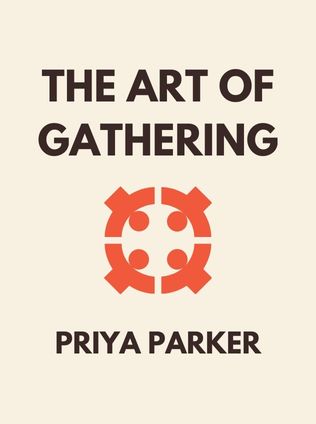
The Art of Gathering
How We Meet and Why It Matters
By Priya Parker
Published 05/2018
About the Author
Priya Parker is a highly acclaimed facilitator, author, and expert in the art of gathering. With a background in conflict resolution and event design, Parker has dedicated her career to understanding and improving the ways in which people come together. Her book, The Art of Gathering, provides a profound exploration of how to make gatherings not just functional but transformative. Parker’s unique approach combines her expertise in facilitation with a deep understanding of human dynamics, making her insights invaluable for anyone looking to create meaningful and impactful events.
In her work, Parker emphasizes the importance of intentionality in gatherings, advocating for a focus on purpose and connection. She has worked with a diverse range of clients, from corporate teams to community organizations, helping them to rethink and reimagine their gatherings. Her approach is grounded in the belief that the way we come together can shape our experiences and relationships in profound ways.
Main Idea
At the heart of The Art of Gathering is the idea that gatherings should be more than just routine events; they should be purposeful, intentional, and deeply engaging. Priya Parker argues that the success of a gathering is not just about logistics but about creating an experience that resonates with attendees on an emotional and intellectual level. She contends that a gathering’s purpose should guide every aspect of its planning and execution, from the initial invitation to the final farewell.
Parker’s book challenges conventional approaches to hosting by emphasizing the importance of clarity, connection, and creativity. She provides a comprehensive framework for creating gatherings that are memorable and impactful, focusing on the significance of setting a clear purpose, managing the dynamics of the event, and crafting moments that foster genuine interactions. Through her insights, Parker encourages hosts to think critically about the intent behind their gatherings and to approach each event with a strategic mindset.
Table of Contents
- Introduction: The Purpose of Gatherings
- The Pre-Gathering Phase
- The Importance of the Opening
- Directing the Gathering
- The Power of Vulnerability
- Encouraging Productive Conflict
- Closing the Gathering with Impact
The Purpose of Gatherings
Parker opens The Art of Gathering by underscoring the necessity of having a clear and compelling purpose for any gathering. She asserts that without a defined purpose, gatherings can become aimless and uninspired. Parker writes,
"A gathering that lacks a clear purpose is a gathering that lacks direction."(Parker). This purpose acts as the foundation upon which every other element of the gathering is built, guiding decisions about the venue, guest list, and overall design.
To establish a clear purpose, Parker recommends that hosts begin by asking themselves what they hope to achieve with the gathering. This involves not only identifying the main objective but also understanding the desired outcomes and experiences for attendees. By articulating a clear purpose, hosts can ensure that every aspect of the event contributes to achieving that goal.
For example, a business conference might aim to foster networking and professional development, while a family reunion might focus on reconnecting and celebrating shared history. By defining these objectives, hosts can tailor the event to meet these goals, creating a cohesive and focused experience for all participants.
Setting Intentions
Setting intentions involves articulating the gathering’s purpose and communicating it effectively to participants. Parker emphasizes the importance of being explicit about the gathering’s goals, as this helps align expectations and ensures that everyone is on the same page. She notes,
"Be explicit about why you're gathering and what you hope to achieve."(Parker).
One way to set intentions is through the invitation process. By clearly outlining the purpose and expected outcomes of the gathering, hosts can help guests prepare mentally and emotionally. This might involve including a brief description of the event’s goals in the invitation or providing context in pre-event communications.
Another approach is to incorporate the gathering’s purpose into the event’s design. For example, if the goal is to promote collaboration, the event might include interactive workshops and team-building exercises. If the aim is to inspire creativity, the gathering might feature activities that encourage brainstorming and innovation. By integrating the purpose into every aspect of the event, hosts can create a more focused and effective gathering.
Sign up for FREE and get access to 1,400+ books summaries.
You May Also Like
The Subtle Art of Not Giving a F*ck
A Counterintuitive Approach to Living a Good Life
By Mark MansonRich Dad Poor Dad
What the Rich Teach Their Kids About Money - That the Poor and Middle Class Do Not!
By Robert T. KiyosakiHow To Win Friends and Influence People
The All-Time Classic Manual Of People Skills
By Dale CarnegieQuiet: The Power of Introverts
The Power of Introverts in a World That Can't Stop Talking
By Susan Cain



















